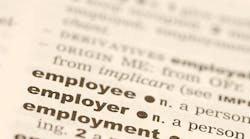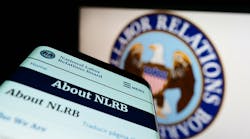Employers need to take heed of the National Labor Relations Board (NLRB) ruling that expands the joint liability companies share with staff leasing firms even if they previously avoided it because they don't directly control the leased employees. In the NLRB's view, liability for unfair labor practices now exists simply if a company could exert direct control over leased employees in the future.
Although the case involved a union representation vote, the effects are sure to be picked up by agencies. Among those expected to embrace the NLRB precedent are OSHA, the Equal Employment Opportunity Commission and the Office of Federal Contract Compliance Programs.
Attempts to reverse the decision legislatively can't get past President Obama, and court challenges aren't likely to succeed given the recent track record of such litigation.
What should an employer do? Attorney Emily Miller of the law firm of Cozen O'Connor observes, "The contours of the new test will continue to emerge for years to come as parties litigate the many issues it raises. In the meantime, unwitting employers could find themselves hauled to the bargaining table, and drawn into unfair labor practice charges, as joint employers."
However, she says companies can take some actions to minimize their risk.
First, review all contracts with staffing agencies and other contractors to make sure they don't raise a joint employment red flag. Because the new test considers whether the potential to control terms and conditions of employment, contracts should include language making it clear that all such control rests exclusively with the contractor.
"However, remember that while a bulletproof contract can be helpful evidence, what ultimately matters is whether the parties conducted themselves in accordance with that language," Miller adds.
When communicating expectations to a contractor, ensure it's clear on your ultimate goal, and leave it to that firm to direct its employees on how to achieve that goal. "As in the NLRB case, the more detail the ‘user employer' provides in its directives, the more likely it will be found to have indirect control over the leased employees," she notes.
Stay out of hiring and firing decisions completely, she warns. In the NLRB case, the contract set conditions on staff leasing firm's hiring practices, including being able to discontinue use of a contracted worker, which weighed in favor of the joint employer finding. "While many employers are hesitant to relinquish the reins entirely when it comes to determining who will work within their walls, doing so appears to be a must under the new test," Miller explains.
She also says companies must be careful not to create parameters on wage rates for leased employees. In the NLRB case a contract provision prohibiting the staffing firm from paying its employees more than regular company employees in comparable positions weighed against the client. "Wage decisions should be left to the unfettered discretion of the contractor," Millar stresses.
More difficult is making sure you don't establish employment conditions for these workers. "This poses particular practical difficulty for employers that engage contracted workers in assembly line-type environments," Miller says, as happened in the case the NLRB decided.
"While this kind of control will be hard to avoid, there are some mandates that employers can avoid laying down," Miller says. "For example, do not mandate when contracted workers will take breaks or require them to work particular hours. Leave that rule-making to their own employer."
Some of these actions may not be appropriate for all companies in all circumstances, but review your arrangements and keep in mind that the odds of being targeted by unions and regulators for joint employer status just got a lot worse.




